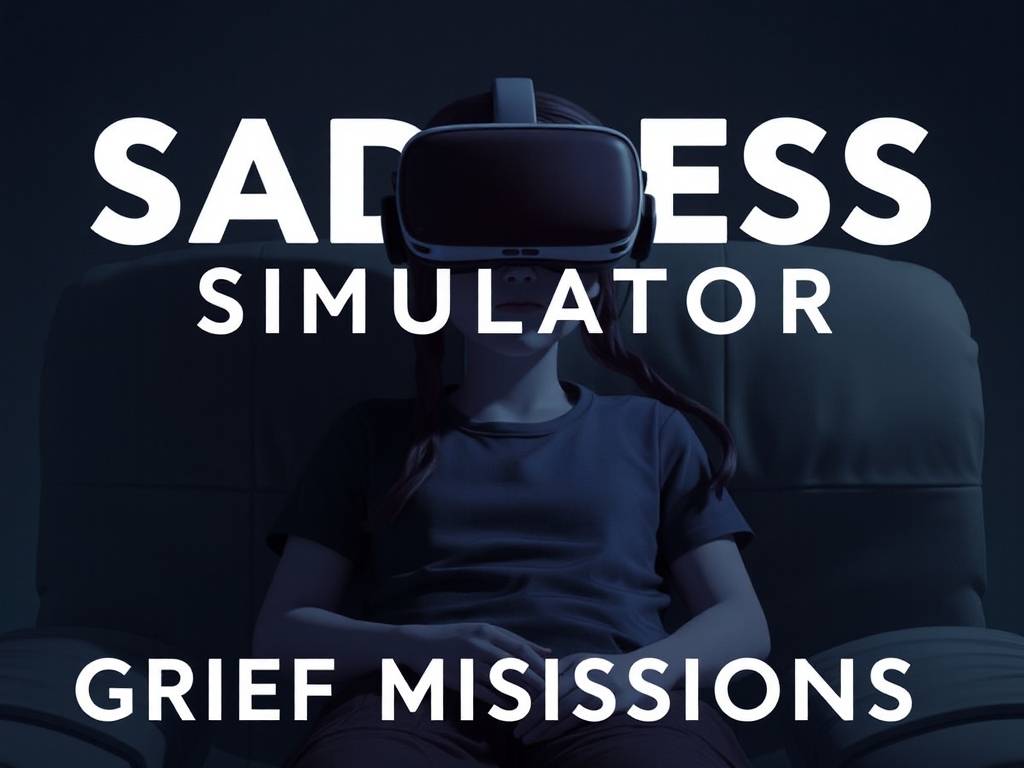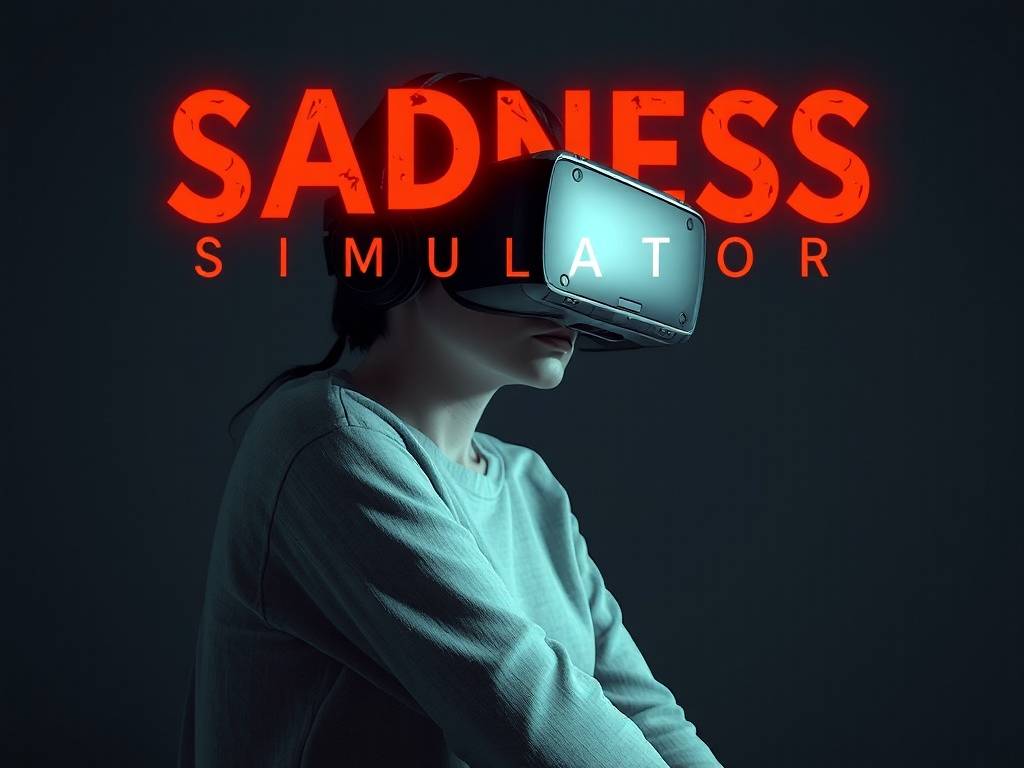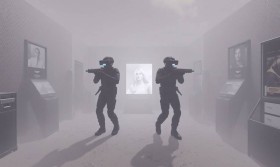In the ever-expanding universe of virtual reality, developers have charted the exhilarating peaks of fantasy adventure and the adrenaline-soaked trenches of combat. Yet, a quiet, profound revolution has been brewing in the genre often termed "empathy games." At the forefront is the controversial yet critically acclaimed Sadness Simulator VR, a title that eschews traditional goals in favor of holding space for melancholic reflection. Its latest expansion, the Grief Missions DLC, is not an add-on but a deep, transformative pilgrimage into the heart of human loss. It is not about winning; it is about feeling, and ultimately, about the fragile process of healing.
The core Sadness Simulator VR experience prepared users for this journey through abstract environments and ambient narratives. The Grief Missions DLC, however, is strikingly specific and personal. It presents a series of self-contained "missions," though the term feels deliberately ironic. There is no enemy to vanquish, no puzzle to solve in the conventional sense. The only objective is to navigate a memory-scape shaped by a particular loss. Upon donning the headset, the user selects from a curated list of scenarios: "The Empty Chair," centered on the loss of a partner; "The Silent Phone," dealing with a fractured friendship; "Gone Too Soon," confronting the death of a child; or "The Unsaid," which grapples with the complex grief following a strained parental relationship.
The genius of the DLC lies in its interactive mundanity. In "The Empty Chair," you do not battle dragons; you navigate a Saturday morning. The mission begins in a sun-drenched, highly detailed kitchen. The smell of coffee is almost palpable through the haptic feedback controllers, which simulate the warmth of a mug. The mission's "challenge" is to set the table for two. You physically reach into a cupboard, grab a second plate, and place it opposite yours. The act is simple, but the weight is immense. As you do this, a ghostly, semi-transparent figure of your partner might flicker into the chair for a moment, a whisper of a laugh echoing, before dissolving. The VR environment is programmed to react to your hesitation, your gaze. If you linger too long on the empty chair, the sunlight outside the window might dim slightly, and a gentle, melancholic piano melody swells.

This is where the "simulator" aspect truly shines. The game does not tell you how to feel; it creates a container where your own emotions can safely surface. Haptic feedback is used not for shock but for connection—a phantom sensation of a hand on your shoulder, the vibration of a purring cat rubbing against your leg in a memory of a lost pet. The missions are non-linear. You can choose to open a closet and bury your face in a sweater that still carries a fading scent, triggering a flashback of a walk in the rain. Or, you can choose to pack the sweater into a box. Neither choice is right or wrong; both are part of the grieving process. The game validates the entirety of the experience—the anger, the denial, the profound sadness. In "The Silent Phone," you can type out and delete text messages to the friend you've lost, a cathartic act of expressing words that can never be sent.
A particularly powerful mechanic is the "Memory Weaving" system. Scattered throughout each environment are "Echoes"—interactive objects that hold strong emotional resonance. Touching a specific book on a shelf might transport you to a brief, fully realized memory of discussing its plot with the person you've lost. Initially, these memories are sharp and painful. However, as you revisit them, you gain a subtle ability to alter them. You can't change the past, but you can change your focus within it. In a memory of an argument, you can turn your gaze away from the angry face and look out the window at a beautiful sunset you had missed, softly reframing the memory from one of pure conflict to one of shared, flawed humanity. This mechanic is a profound metaphor for the therapeutic process of cognitive restructuring, where one learns to revisit painful memories without being consumed by them.
Critics of the DLC ask a valid question: why would anyone willingly subject themselves to this? The answer lies in the controlled safety of the virtual space. In the real world, grief is messy, unpredictable, and often isolating. People around you may urge you to "move on." Grief Missions offers a sanctuary where you are given permission to not move on, to sit with the feeling for as long as you need, without judgment. It is a private rehearsal for the difficult acts of letting go. The final stage of each mission is not a "boss fight" but a "Release Ritual." In "The Empty Chair," it might involve finally clearing the place setting, not with a sense of erasure, but with a quiet acknowledgment. As you place the plate back in the cupboard, the room doesn't become dark and empty. Instead, the sunlight returns, brighter, and the memory of your partner is no longer a painful ghost but a warm, stable presence in a photograph on the wall. The loss is not gone, but it is integrated.

The Grief Missions DLC for Sadness Simulator VR is a landmark in interactive art. It boldly rejects the notion that games must be fun to be valuable. Instead, it posits that they can be therapeutic, insightful, and deeply human. It is a tool for those navigating their own grief and an empathy engine for those who wish to understand the experience of loss. By allowing us to touch, interact with, and gently reshape our most painful memories in a safe virtual space, it offers a new vocabulary for healing. It is a poignant reminder that some of the most important journeys we can take are not to fantastical worlds, but inward, to the quiet, wounded places within ourselves, and that in fully acknowledging our sadness, we make the first, most difficult step toward peace.


















